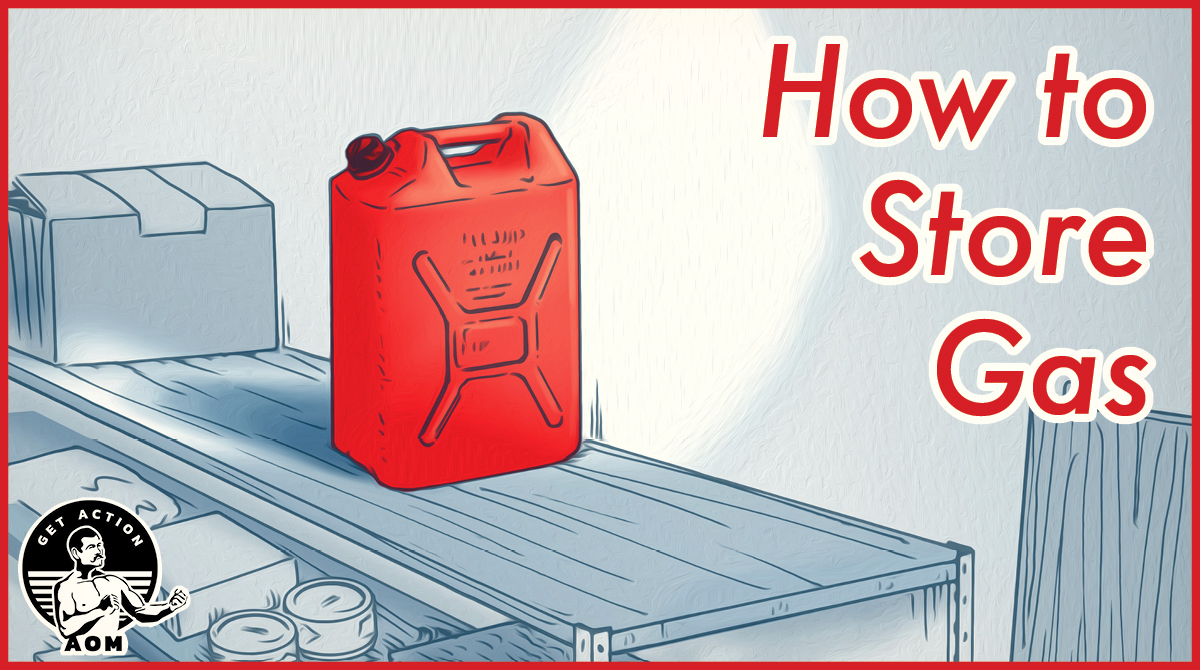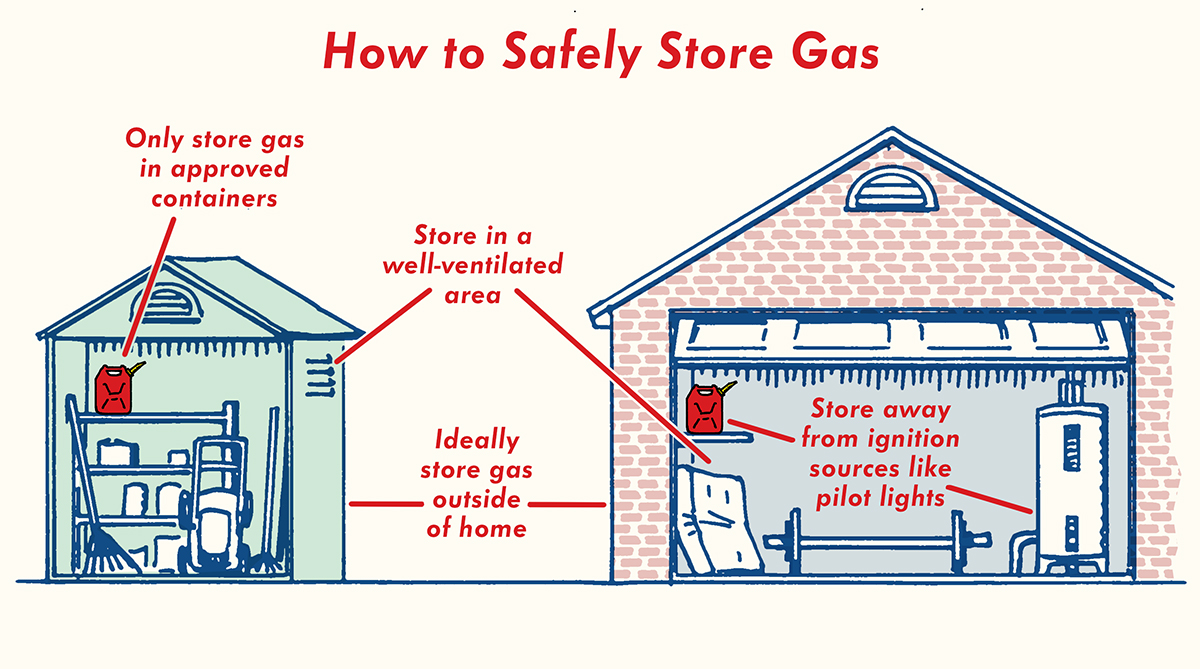
If you’re a homeowner, you likely need to store gasoline to power various home maintenance machines like lawn mowers, power washers, and leaf blowers.
But, as everyone hopefully knows, gasoline is highly combustible and flammable stuff. According to the National Ag Database, the vapor of one cup of gasoline has the explosive power of about five pounds of dynamite. Ka-boom!
To ensure you’re storing your gas safely at home, we provide the following common sense guide.
How to Store Gas Safely

Check your local laws and homeowner’s insurance policy for gas storage regulations. Because gas is a highly flammable and combustible substance, most cities have ordinances on the books regulating its storage. Most allow homeowners to store what is deemed a “reasonable†amount of gas (the amount you’d need for powering things like lawn mowers) on their property without a special permit. This amount can range from 2.5 gallons (as is the case in NYC) to a couple dozen gallons (in more rural areas). Check with your local fire department to find out your local limits for gas storage.
Besides checking with your fire department, be sure to give your homeowner’s insurance policy a glance over. Most policies will limit the amount of gas you can store on your property. They might cover fires started by a reasonable amount of stored gas, but if a fire burnt your property down because you were storing 100 gallons of it in your garage, you’re probably not going to be covered.
Only store gas in a container approved for gas storage. Don’t chintz out and store your gas in milk jugs or glass containers; translucent containers let in light, which degrades gas, and insecure containers can lead to spills.
For safety and to preserve the longevity of your gas (more on the shelf life of gas below), only store gasoline in approved containers. Most plastic jerry cans you can buy at hardware stores meet all standards for storage.
And a bit of useful information about fuel storage containers — there’s a color code for them:
- Red = gasoline
- Yellow = diesel
- Blue = kerosene
- Green = oil
This could come in handy if you run out of gas and call your buddy to bring you some fuel. If the can he brings you is blue, you’ll want to think twice before you start filling up your car with what’s in it.
Ideally, store gas in a shed or garage that’s detached from your home. According to the National Fire Protection Association, every year there are about 2,400 fires in American homes that start from gasoline stored in the home. And most of the time, “stored in the home†means in an attached garage. The problem with storing your gas in an attached garage is that it’s closer to ignition sources like a pilot light of a furnace or hot water heater, and if a fire does start, it can quickly spread to your living space.
To reduce the risk of fires starting and spreading in your home, store your gas and other flammable materials in a detached garage or shed. If you don’t have a detached garage or shed, and don’t want to build an entire out-building just for storing your gas, you can buy a special steel safety cabinet that’s designed to store liquid flammables and can be set up outside your garage.
While, ideally, you should store gasoline outside of your home, most people just store their gas in their garage, even if their garage is attached to their house. That’s fine, as long as you follow the below precautions.
Store gas in a well-ventilated and cool area away from an ignition source and out of reach of children. Whether you store your gas in a detached shed or your attached garage, you want to make sure that the area is well-ventilated, fairly cool (shouldn’t get hotter than 80 degrees Fahrenheit), at least 50 feet away from an ignition source (e.g., pilot lights), and out of reach of children.
This will reduce the chances of a fire starting or your kiddos playing with the gas.
Don’t fill gas all the way to the top of the can. Gas expands as it heats, so you want to leave some room in your gas can for that expansion. When you fill your gas can up, don’t fill it up all the way to the top. Most gas cans have a fill line that’s well below the top of the can; only fill your can to that line.
Keep a fire extinguisher near the gas storage area. In case a fire does start from your gas storage, you’ll want something on hand to put it out quickly. Keep a fire extinguisher nearby. And make sure you review how to use it effectively.
How Long Can You Store Gas Before It Goes Bad?
Most unleaded gasoline will start going bad 30 days after you pump it into your can. While it’s sitting in your can, it’s evaporating and chemicals are degrading. To be clear, gas doesn’t go bad overnight. After 30 days, the gas is still usable; it just won’t be as efficient in powering your machines. As it gets older and older, the degraded gas will cause your engines to sputter or simply not start.
One solution to avoid “stale†gas is to only store the amount of gas you need for a month. If you only need a gallon of gas a month to run your home maintenance machines, there’s no point in storing 5 gallons of it because it will just go bad before you actually need to use it.
If you’d like to have more gas on hand than you use in a month, add a fuel stabilizer to your stored gas. Fuel stabilizers neutralize the chemical reactions that cause gasoline to degrade during storage. These stabilizers can extend the storage time of gas for up to a year.
Fuel stabilizer is cheap (about $8 a bottle) and can be found at Walmart and hardware stores.
If you’d like to store lots of gas, for an especially long time — as in creating storage for emergency/survival purposes — there are additional considerations to undertake. We’ll cover those in a future article.

